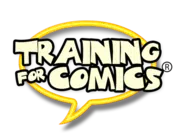4 Learnings from Barry Windsor-Smith’s Experience

In the vast universe of comics and illustration, few stars shine with the intensity and originality of Barry Windsor-Smith. His journey is as extraordinary as it is inspiring: he began drawing on benches in a New York plaza, without a dollar in his pocket, creating his first issue for X-Men. From these humble beginnings, this brilliant British artist rose to the heights of recognition with masterpieces like Conan the Barbarian and Weapon X, constantly revolutionizing his style until forging an unmistakable artistic identity.
What makes Windsor-Smith even more admirable is his unbreakable creative independence. Far from settling into major publishing houses, he forged his own path by founding labels where he could develop his art with absolute freedom, challenging industry conventions and elevating comics to the category of refined art.
What lessons can we extract from this brilliant mind that has forever transformed our perception of graphic narrative? Join me on this journey through the mind and heart of a true revolutionary of drawing, discovering four fundamental learnings that can transform your approach to sequential art and illustration.
A Life Dedicated to Constant Learning: The Never-ending Formation

Windsor-Smith’s educational journey dispels the idea that artistic learning has an endpoint. For three and a half years, he immersed himself in Illustration and Graphic Design studies at a prestigious London art school. Those sixties were crucial, as he absorbed the secrets of Graphic Arts that would later significantly influence all his work. However, this formal education did not cover all traditional artistic disciplines such as painting or sculpture.
What’s truly remarkable is that, even after decades of international recognition, Windsor-Smith keeps the flame of learning alive. He wasn’t satisfied with mastering the techniques he was taught, but constantly seeks to fill the gaps in his initial training, studying new techniques, styles, and approaches to art on his own.
This passion for perpetual knowledge teaches us that artistic training is not a destination, but a journey that lasts a lifetime. Looking to elevate your artistic level with practical exercises designed by professionals? Discover unparalleled resources here. No course, however extensive, can encompass the entire artistic universe. True mastery comes from dedicating every available moment to exploring new techniques, tools, and perspectives that enrich our creative arsenal.
Windsor-Smith began influenced by figures like Jack Kirby, but soon developed his own style by incorporating elements from Pre-Raphaelites like Edward Burne-Jones and Dante Gabriel Rossetti. This evolution was possible thanks to his insatiable curiosity and willingness to study artistic traditions seemingly distant from comics. His example invites us to look beyond our comfort zone, to seek inspiration from diverse sources, and to build bridges between seemingly distant disciplines.
Self-taught learning became a way of life for Windsor-Smith, allowing him to continuously reinvent himself and remain relevant over decades. From his first pages for Marvel to his later elaborate lithographs, each stage of his career reflects new influences, refined techniques, and a deeper understanding of visual art.
The Perfect Balance: Maximum Effort and Creative Pleasure
One of the most valuable lessons we can extract from Windsor-Smith is his peculiar philosophy about artistic work: you must like what you do, even though the process is extremely demanding. His legendary illustration “The Devil’s Lake” took him between four and five months of intense work, a dedication that, in his own words, almost ended his life.
This apparent contradiction—enjoying a process that involves considerable suffering—is perhaps the key to his exceptional artistic quality. Windsor-Smith acknowledges that when looking at reproductions of his works, he can relive the sensation he experienced when creating them, a mixture of creative agony and deep satisfaction.

The British artist establishes an important distinction between self-imposed effort and external pressures. According to him, he has created all his comics for the pure pleasure of creating them, not as a simple response to editorial demands. “Artists are not carpenters and assemblers following blueprints,” he states, rejecting the industrial vision that reduces artists to mere productive tools.
This approach teaches us that quality cannot be rushed or compromised. True art requires absolute dedication and an unwavering commitment to excellence, regardless of external pressures. Enhance your creativity with proven methods that balance technique and personal artistic expression, click to explore more possibilities.
At the same time, Windsor-Smith reminds us of the importance of maintaining passion for what we do. Despite the monumental effort involved in each work, he never lost his love for the creative process. This duality—iron discipline combined with genuine enthusiasm—is what separates true masters from mere technicians.
For artists who aspire to excellence, this philosophy poses a challenge: finding that delicate balance between relentless self-demand and preserving creative pleasure. Windsor-Smith demonstrates that it’s possible to create under extraordinarily high standards without losing the fundamental enjoyment of the creative act, even though the path involves moments of intense frustration and effort.
Beyond the Traditional Industry: Forging Your Own Path

If there’s something that characterizes Windsor-Smith’s career, it’s his courage to question the established models of the comics industry. His experience working on Conan taught him the rigors of a system based on inflexible deadlines and constant pressures. Despite his professionalism and commitment, he frequently found himself at the limit to meet deadlines, a situation he shared with writer Roy Thomas.
“There are many things to consider in this business that fans don’t know about: it’s not easy… It never is,” Windsor-Smith confessed, revealing the less glamorous side of working for major publishers. This experience even led him to discourage his followers from pursuing a career in conventional comics.
However, what’s truly inspiring about Windsor-Smith is not his criticism of the system, but the alternatives he built. After his time on Conan, he made a radical decision: he left behind the corporate world of comics and, together with talents like Bernie Wrightson, Jeff Jones, and Mike Kaluta, formed The Studio, a collective dedicated to fantasy and science fiction illustration that allowed them greater creative freedom and control over their works.
Not satisfied with this first independence, Windsor-Smith took another step by founding Gorblimey Press, his own publishing label where he published lithographs, posters, and calendars for direct sale to the public. Interested in developing your own style that stands out in today’s market? Explore innovative tools to enhance your artistic originality here.
This entrepreneurial vision teaches us that the contemporary artist’s path is not limited to traditional options. Windsor-Smith understood, much earlier than others, that self-management could be a path not only for creative freedom but also for economic sustainability. Today, with digital platforms, crowdfunding, and multiple self-publishing options, his message resonates more strongly than ever.
Windsor-Smith’s example inspires artists to consider alternatives such as selling original prints, creating exclusive content for patrons, developing self-funded projects, or forming creative collectives. These strategies not only allow for greater artistic independence but can also be financially more rewarding in the long run.
And if, despite everything, you decide to enter the traditional publishing world, Windsor-Smith’s experience provides invaluable mental preparation: understanding the real demands of the industry, properly valuing your work, and always keeping alive the possibility of creating your own spaces when circumstances require it.
Breaking Molds: Beyond Perfect Bodies

Perhaps one of the most revolutionary aspects of Windsor-Smith’s work has been his approach to the representation of the human figure, especially in a medium like superhero comics, where hyper-perfect bodies had become an unquestionable norm.
When asked how a superhero would look in real life, Windsor-Smith offered an answer that condensed his entire artistic philosophy: he didn’t feel part of the generation obligated to sculpt the stereotype of the perfect body following the terms established by figures like Stan Lee. This stance wasn’t casual, but the result of deep reflection on the purpose of art.
For Windsor-Smith, physical representation must be a vehicle to show the psychology of the character. His creative process reverses the conventional formula: he doesn’t start thinking about muscles or ideal proportions, but about the inner world, the emotions, and the personality that will then manifest through the body. Perfect your ability to convey emotions through drawing with specialized resources that will revolutionize your artistic approach.
With surprising humility, Windsor-Smith compares his approach to that of Renaissance masters like Michelangelo or Botticelli, who sought to reveal the soul of their subjects through their physical representations. This connection with classical artistic tradition elevates his work above genre conventions and expands the expressive possibilities of comics.
His treatment of Wolverine in “Weapon X” perfectly illustrates this philosophy: far from simply presenting a muscular superhero, Windsor-Smith shows us a vulnerable, tortured human being, whose body reflects the trauma and dehumanization to which he has been subjected. Each line, each shadow, serves the psychological story of the character.
This lesson is particularly valuable in the current era, where body diversity and authentic representation have become central themes. Windsor-Smith invites us to question stereotypes, vary our representations, and think deeply about the psychological traits we want to convey through our characters.
This vision not only enriches art but makes it more human, more connected with real experience. By drawing bodies that reflect complex personalities instead of unattainable ideals, Windsor-Smith shows us a path toward more honest, more diverse, and ultimately more powerful art.
The Indelible Legacy of a Visionary Master
Barry Windsor-Smith represents the quintessence of the artist who transcends his medium. From his first steps following in Jack Kirby’s footsteps to becoming a completely original voice inspired by the Pre-Raphaelites, his artistic evolution shows us the transformative power of perseverance, intellectual curiosity, and creative integrity.
His contributions to the world of comics go far beyond the epic adventures of Conan or the heartbreaking origin of Wolverine. Windsor-Smith raised the standards of the medium, demonstrating that the ninth art could reach levels of sophistication, detail, and psychological depth comparable to any traditional art form. Take your illustrations to the next level with professional techniques designed to maximize your creative potential, discover them now.
What makes his teachings especially relevant for contemporary artists is his comprehensive vision of the craft: Windsor-Smith understands that technical excellence must serve a personal vision, that creative independence is as important as mastery of the pencil, and that each stroke must communicate something meaningful about the human condition.
His example invites us not to settle for being merely competent, but to aspire to mastery; not to blindly follow trends, but to forge our own path; not to reproduce stereotypes, but to represent the true diversity of human experience.
For those who wish to follow in his footsteps, the message is clear: never stop learning, commit to excellence without losing enjoyment of the creative process, build your own spaces when the industry limits you, and develop an artistic vision that goes beyond conventions to reveal something authentic and deeply human.
Windsor-Smith’s true legacy lies not only in his magnificent pages but in his unwavering commitment to artistic integrity. In a world where the pressure for immediacy and mass production is constant, his example reminds us that true greatness requires time, reflection, and absolute dedication to personal vision. As he himself demonstrated throughout his extraordinary career, Are you ready to transform your passion for drawing into a path of authentic artistic mastery? Find inspiration and practical methods here.
Windsor-Smith ultimately teaches us that the authentic artist is not one who follows trends or meets others’ expectations, but one who finds their unique voice and expresses it with courage, passion, and absolute dedication. His path is not the easiest, but as his work attests, it is undoubtedly the most rewarding.



